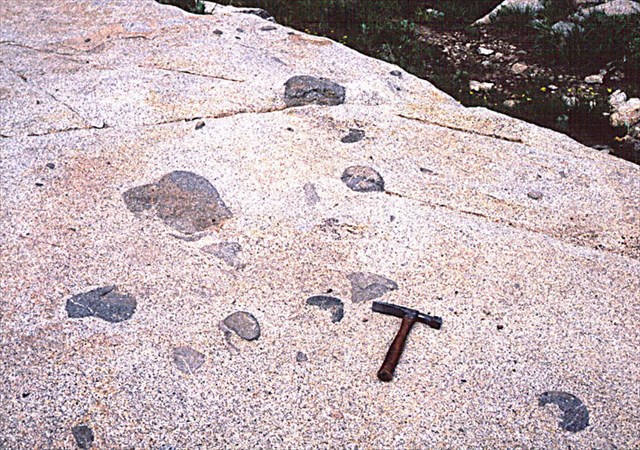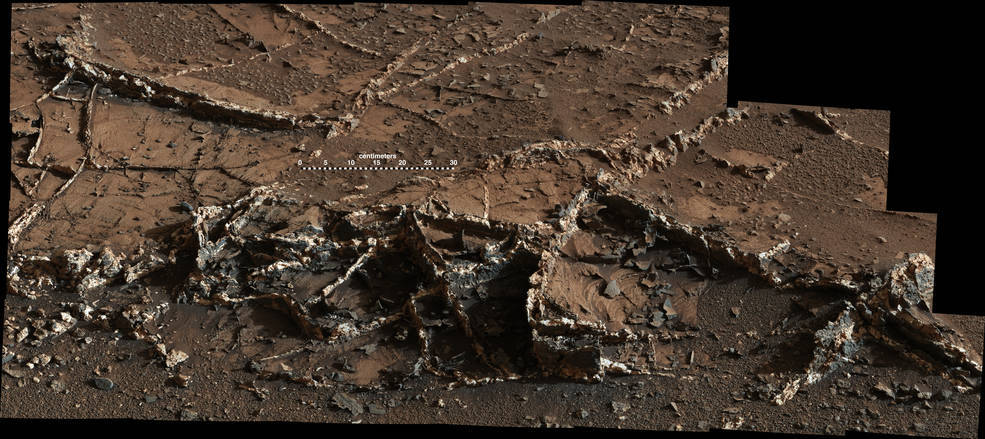Looking at the grey limestone Exposed in the drainage.
- Would you say these are xenoliths or cognate xenoliths?
- Describe a few differences and similarities?
- There are a number of calcite veins, Do they run in the same direction, or do they vary?
- Do any calcite veins run through the Xenoliths or around them?
Xenoliths are rock that falls into another rock that forms around it. They can be something completely different, or they can be something that is very similar. Normally they are used to describe igneous rocks. Though they can also be used to describe xenoliths in other kinds of rocks.
Xenoliths are actually different stones that are very different in makeup. A cognate xenolith is one that is very similar to the rock that it is container in except for a few minor differences.

For example a piece of igneos material inside limstone would obvously be a xenolith. A piece of limestone that is inside another limestone would most likely be a cognate xenolith. Though many times you need to check them chemically, in this case I want you to use what you see to determine if they are similar or different.
In this case we are looking at Limestone. The limestone here is formed and then folded nearly vertical. At some point some other materials dropped into the limestone leaving a darker rock surrounded by the other sedementary limestone.
That limestone eventually cracks under pressure and under folding. Often limestone will crack many times over the years. Limestone is porus and allows water to flow through it. As the water starts to seep through the cracks it starts to desolve the calcite and then reforms into the cracks that form in the limeston. These eventually form the white veins that are so common in limestone. Sometimes thick and sometimes very thin.
On Mars?
Yes these kind of features exist on other planets as well. The stone cracks and minerals will fill in those cracks. When curiosity visited mars, it snapped this photo. Showing the minerals filling the cracks, then the stone that was softer eroded away in the winds.

Photo From NASA Curiosity Mission March 18, 2015.